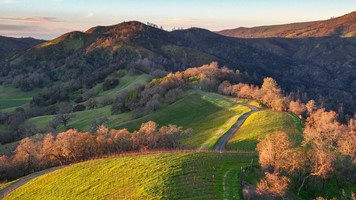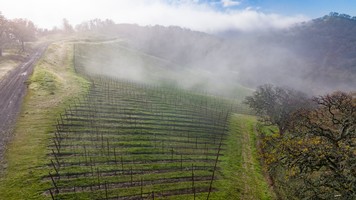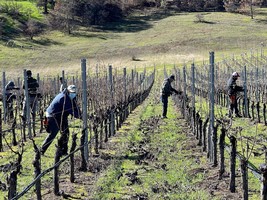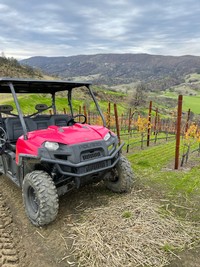Dormancy in the Vineyards: Reserves, Restraint, and Rejuvenation
During these winter months at Somerston Estate, our vineyards are in a grapevine growth cycle phase referred to as “dormancy.” This occurs after the grapevine drops its leaves and will last until late winter into early spring. Not only does dormancy help the vines tolerate cold temperatures, but it has an important influence on grapevine flowering and vegetative growth in springtime.

Reserves
It’s common for grape leaves to remain on the vine after harvest. They continue to perform photosynthesis and produce carbohydrate reserves. Eventually, the vines begin to pull back these carbohydrates from the leaves to later be stored, causing the look of foliage on the vine leaves. By winter, vines have stored their reserve nutrients in the cordons and roots, which are critical for the vines to have the energy to produce new buds and shoots in the spring—a time when there are not yet leaves on the vine to produce carbohydrates through photosynthesis.
Restraint

It’s vital for us to practice restraint during the winter dormancy and let Mother Nature do her thing. While we continue to check on the health of the vines, we practice minimal intervention during this period and trust the process. The vines go through a dehydration process so that water does not freeze within the vine tissues during the cold winter months, which is especially important if there are winter frosts. This is not a typical problem in California, but we are more prone to colder weather conditions given our high elevation. We also had a nice bout of rain in early winter, which is essential to future fruit quality.
Rejuvenation

Towards the end of the winter dormancy, our vineyard crew begins the process of pruning, which is an adjustment of the vine architecture for the upcoming harvest. At our Somerston Estate, cane pruning is typically the method used. This practice cuts the vine back to one or more canes that will produce new shoots that develop buds; then, renewal spurs can be used as sites for new canes in the future. This year, due to the drought and limited shoot growth in 2021, cordon pruning will be used for a majority of the vines, and the remainder will be cane. The cordon pruning system leaves a permanent horizontal extension of the trunk in place year after year. And while the cordons themselves don’t usually produce fruitful shoots, spur positions located along the cordon will create productive shoots.
Looking Ahead
Because so much of this process is left up to the nature of the vines, our crew has a chance to focus on other vineyard projects. For example, we are currently preparing blocks for new plantings this spring. Additionally, we are getting ready to protect the vines from frost once they exit dormancy.
See For Yourself
Interested in learning more about our estate vineyard practices? Join us for one of our new experiences at Somerston Estate! Our Priest Ranch Tour & Tasting celebrates the diversity of our unique property with a 90-minute exploration of 1,682 acres of Napa Valley mountainscape, including a tasting of four current release wines, a selection of cheese and charcuterie, and an ATV tour of the Estate that has to be experienced to be believed. This opportunity is weather permitting and must be reserved in advance. Please contact us directly at (707) 967-8414 or email us at visit@somerstonestate.com with any questions. We look forward to seeing you!



